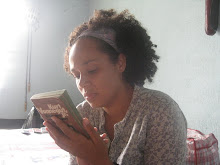In the same way I feel Northern Cameroon is in a perpetual state of arid dullness while everything south of the grand north is vibrant with color. Even within my own village the two extremes exist. Anyone who has passed the Catholic Mission is struck senseless by the color; red, orange, yellow, purple, red flowers; oranges, mangos, papayas; the beautifully illustrated walls of the kindergarten alive with giraffes, lions and elephants. Soon as you pass by those gates you are left with the disturbingly pink Camtel building and the rest of the faded and forgotten. The most depressing buildings for me to pass belong to the children of Mandama. The elementary school, which in comparison to other villages is faring well, still fades into the dirt which lies outside each classroom's door. Many times I have wondered how a child could go from the impossible western style kindergarten at the Mission with its toys and stimulating colors to the cracking and dirty walls of the elementary. It's like they are priming students for a great intellectual and exciting experience only to graduate them to the deepest part of the dungeon. Now this is only my perspective, but I have found that children tend to behave better, pay more attention and participate in a welcoming and cared for environment. Having a maintained school means you care about the school and those who use it. Having a colorful school means you wish to stimulate a child's brain. I have often imagined drenching that school in Pollock like paintings just to give it some color, but the answer ended up serving more than just my hope for color.
When I first came to Mandama I spent a lot of time doing needs assessments with different organizations and community structures. I had a chance during this time to talk with the director and teachers of the elementary in Mandama and the surrounding villages. When I asked what was missing at each school that would enable the staff to more effectively educate their students everyone said educative materials. This was evident the moment you stepped into any classroom, the bare walls adorned only with an aged chalkboard. I was aware of the lack of didactic materials early on in my service having visited schools while still in training. I thought the lack of materials was a problem, but did the teachers? During one conversation a school director gave me examples of what he wanted, posters of the human body, the different systems, muscular, nervous, etc. I started to think after that how I could obtain these in French. The few materials I have seen looked to be from the 1970's and the few materials people sent me from the states didn't seem to translate into the village context. Simple things like drawings of fruit don't translate. Although apples exist in Cameroon they are very rare in village and are never the red variety and oranges are never orange, but usually yellow or green colored. I started to think they needed personalized materials, ones that translated easily for the children. In Hawaii as an Outreach Counselor I led a group of kids in a mural project representing the diverse background of the people living on the islands. Art is always something I enjoy doing with and for others and decided to propose to the director in Mandama that we create our own materials in the form of movable murals.
Today there hangs 24 murals of various sizes at the elementary. Subjects include personal hygiene, the water cycle, slavery, human skeleton, parts of the body, plant life cycle, the transmission of malaria, etc. The project was supported by the community with contributions from various sources, but large in part to my landlord who donated a large sum. The project was also funded largely by the generous donation of pennies from one elementary school in Sacramento, CA. Five other Peace Corps volunteers came for two to three days to assist with the paint and drawing process while community members aided in the prep work.
The murals were painted on ply wood canvases reinforced with a wooden frame. They range in sizes from ¾m x ¾m to as large as 2 ¾m x 1m. We used oil paints and finished the canvases off with varnish to protect them from the Harmattan dust and children's dirty fingers. This project had several advantages over traditional store bought materials and wall murals: Village specific designs using village landscapes, dress and culture; movable so any teacher can use them in their lessons; durable and long lasting in a dusty and harsh environment and reversible (potential to add ply wood to other side and create 25 new murals).
 A health mural highlighting the importance of brushing teeth for the 1st grade classroom. These pictures were taken before the writing was painted on.
A health mural highlighting the importance of brushing teeth for the 1st grade classroom. These pictures were taken before the writing was painted on.


 My house, mid-project.
My house, mid-project.
No comments:
Post a Comment